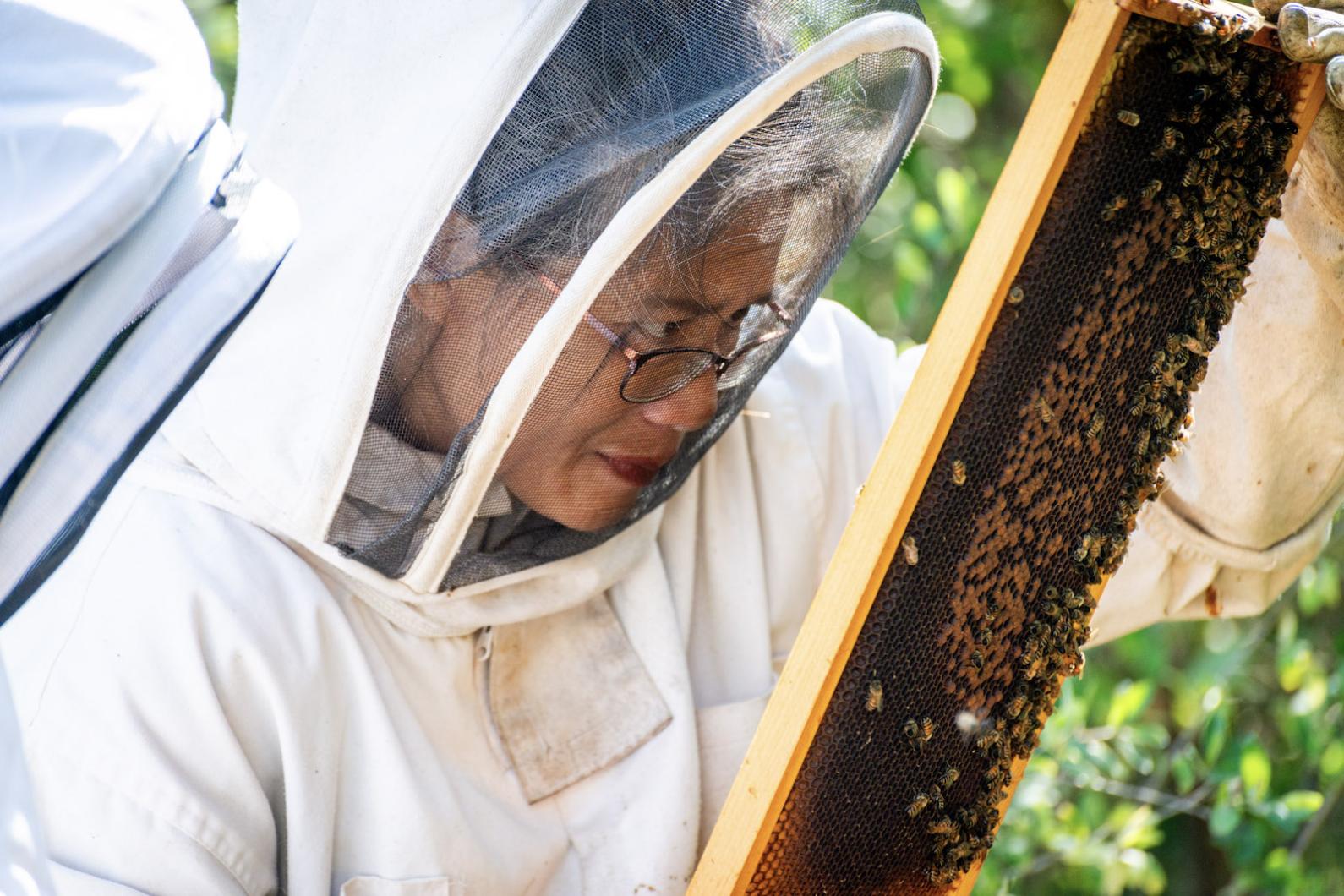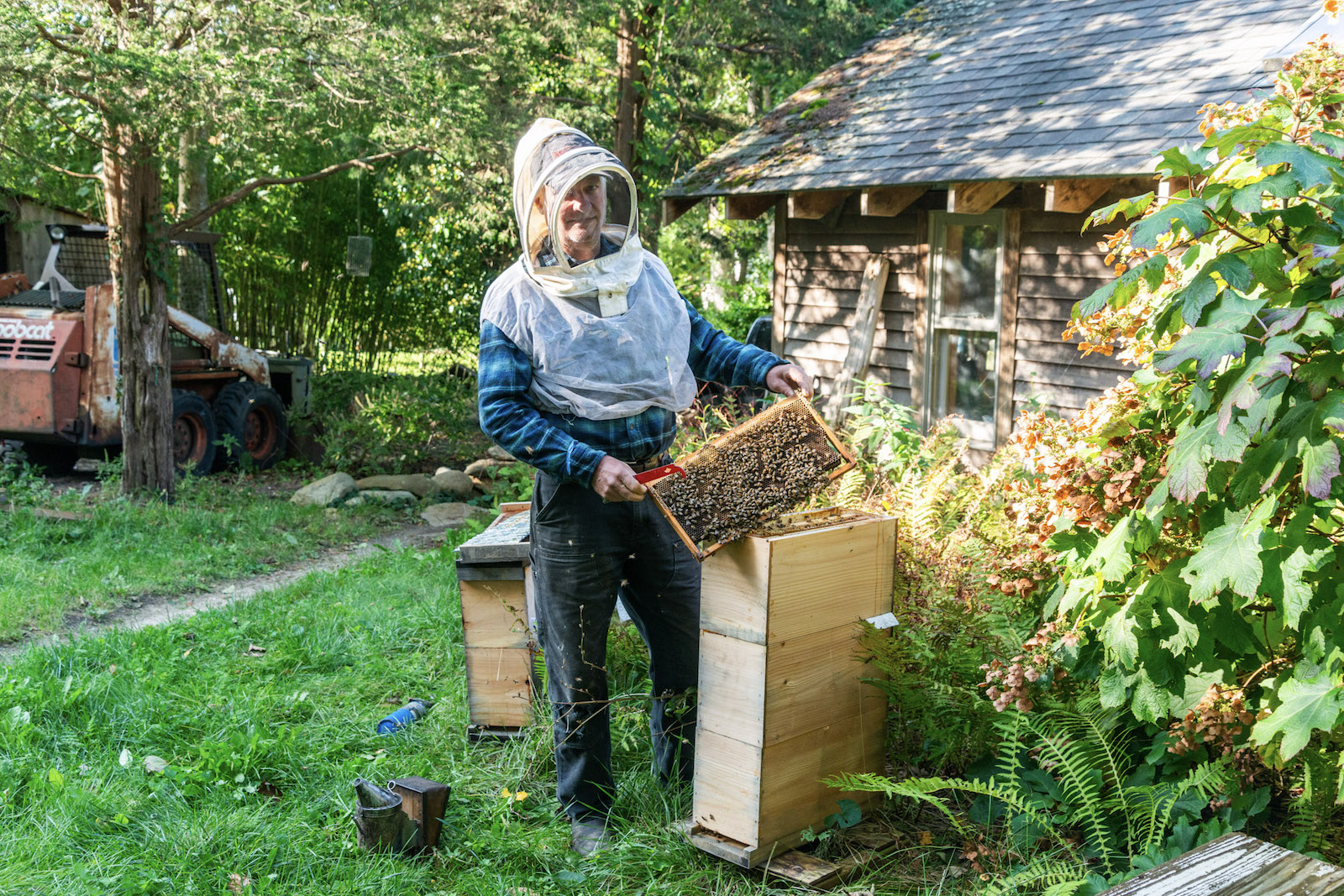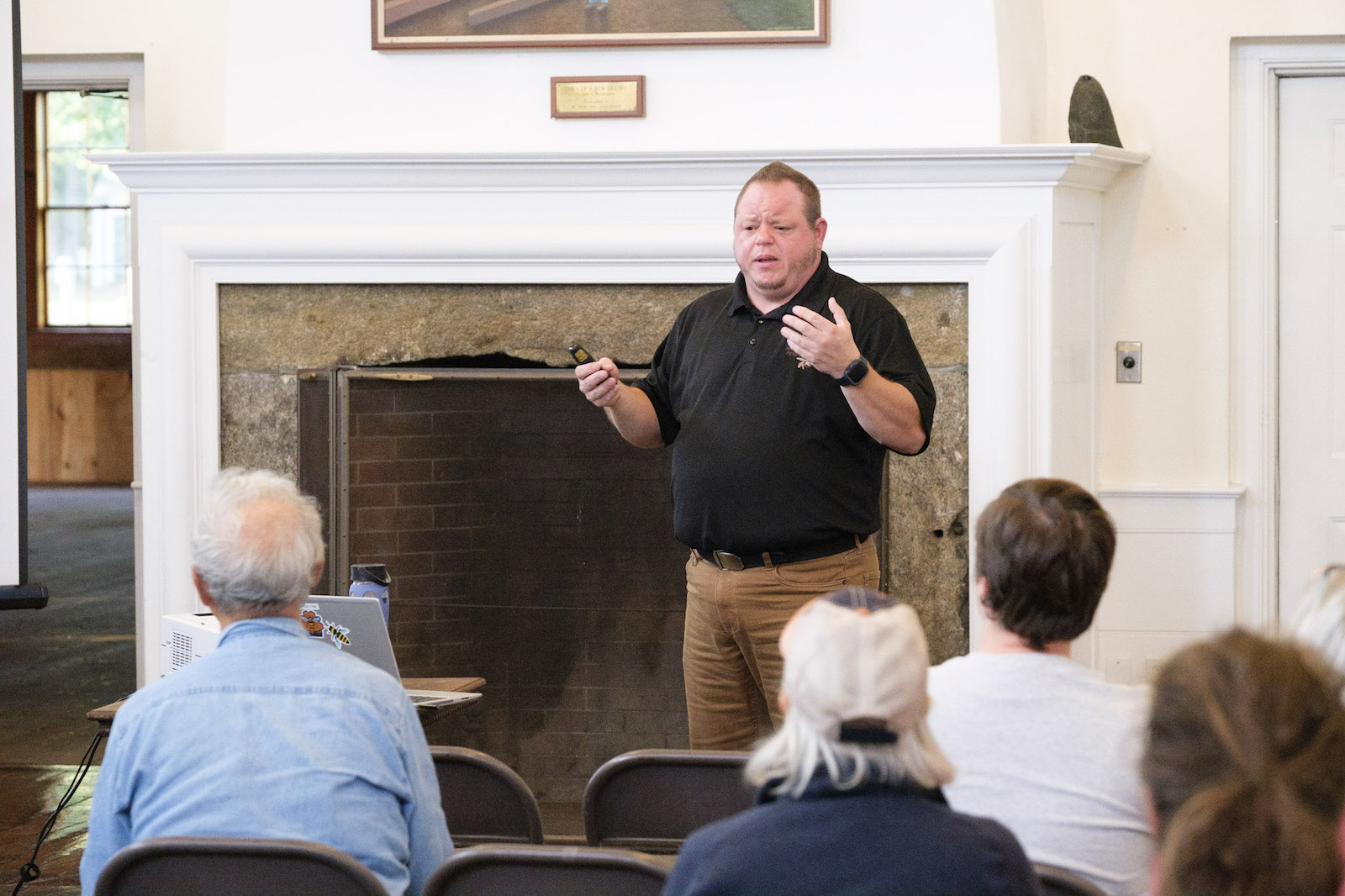It has been a harrowing two decades for the European honeybee, and the thousands of apiarists who keep them. Ever since the enigmatic Colony Collapse Disorder was spotted in the early 2000s and untold numbers of worker bees began disappearing, beekeepers across the country and on Martha’s Vineyard have been on high alert.
A host of environmental factors, pests and diseases likely contributed to the phenomenon, but on the Vineyard one of those pests has risen above the rest to become enemy number one for local beekeepers: the indomitable varroa mite.
“That was the main thing causing colony collapse disorder,” said Island beekeeper Nina Gordon. “Once people started treating for mites, that’s when we stopped having colony collapse.”
It is a major success story for the beekeeping community on-Island, which has managed to thrive despite the best efforts of the mite, which weakens bees and spreads disease amongst the colony. Before treatment and prevention methods were well-known on the Island, many small-scale apiarist were at the mercy of this tiny pest.
“The Island was needing serious support around varroa mite management” recalled Kim Skyrm, PhD., who became chief apiary inspector for the state’s Department of Agricultural Resources in 2015.
Mr. Skyrm, who conducts around 7,000 hive inspections with his team each year, was on-Island last week to conduct inspections of local hives and give a talk at the Martha’s Vineyard Agricultural Hall. The visit was part of an effort to build local knowledge about the parochial conditions of beekeeping in different parts of the state.
“A beekeeper in Berkshire County...they’re not going to have the same temperature and weather patterns as a beekeeper in Vineyard Haven,” he explained during an interview with the Gazette before his visit. “The overall checklist of beekeeping will be the same, but when they need to do those things and what may prompt them to do those things is going to be totally different.”
Beekeeping in Massachusetts, Mr. Skyrm said, is already more challenging than other parts of the country. Long, wet winters can be difficult for the insects to survive, and short summers limit the period when they can leave the hive to forage for food. Recent unpredictable weather patterns have only made things more difficult.
In such adverse conditions, Mr. Skyrm said, it is even more important that apiarists manage their pests. The organization has been ramping up outreach to beekeepers on mite control on the Island in recent years, he said, inspired by a visit to the Island a few years ago for a pair of “dead out” inspections — postmortems of a dead hive to search for the cause of its collapse.
“We do kind of a CSI, and try to figure out what happened, even if there’s no crime scene,” Mr. Skyrm said.
Those inspections revealed two hives devastated by mites, impelling the apiary inspection team to deepen their work on the Vineyard. In 2019, they completed just a handful of inspections, while in 2022 they inspected 78 hives in all six towns.
“That snowballed into a much bigger energy and effort,” Mr. Skyrm said. “It was a big success.... We’ve been preaching the gospel around varroa mite management.”
For Ms. Gordon, Island beekeeper and owner of Kulture Klub MV Kombucha, mites have long been the prime enemy.
“They are like ticks,” she said. “They not only suck out your juices but transmit diseases.”
Originating as an Asian honeybee pest, the varroa mite was first found in the U.S. in the 198os, long before colony collapse disorder was detected, and with the jump from Asian to European bees the mite became more deadly. As Ms. Gordan explained, they are the bee’s equivalent of ticks, attaching to their bodies and feeding on their fluids while transmitting disease.
For Ms. Gordon, who owns five hives and manages 10 others for clients, the key has been to treat hives with formic acid, a compound naturally found in hives which can kill mites but leave bees unharmed.
Tim Colon, owner of Island Bee Company who manages around 100 hives on-Island, said it is a constant battle to stay ahead of mites, even at the professional level.
“It’s so important for beekeepers to stay on top of their varroa mites,” he said.
Though Mr. Colon employs a variety of treatments to combat the pest, he has recently focused in on a new tactic to increase his hives’ resilience: selectively breeding his own queens.
“That has really changed our beekeeping considerably,” he said of the strategy.
Each year, Mr. Colon said, he analyzes the health and honey output of each hive. He then takes queens from the best hives and “grafts” them into the others, in a bid to improve the genetic make-up of those colonies.
“This year, in particular, was a really good queen-raising year,” he said.
Mr. Colon has also introduced some queens from breeders in the Midwest, bred to fight off varroa mite, in the hopes of introducing their pest-fighting genetics to the Island.
In addition to improving his own hives, Mr. Colon said, he hopes to be able to supply queens to other apiarists on-Island.
“Even if they’re buying them from decent people...they’re going to be somewhat inferior to a locally raised queen,” he said, noting how long-distance transportation can stress the queens and lower their health.
Keeping hives healthy is more important than ever for Island beekeepers, as environmental changes lead to new challenges. Warmer temperatures have made the small hive beetle, a pest which used to primarily affect southern beekeepers, more troublesome on the Vineyard, while more frequent summer droughts reduce the available food for bees to collect, Mr. Colon said.
Mr. Skyrm, meanwhile, has his eyes on newly emerging pests like the Tropilaelaps mites (tropi mite for short), a pest currently restricted to Asia.
“The varroa mite...it will be child’s play compared to the tropi mite,” he said. “If it ever comes stateside for us in the U.S., it will pivot beekeeping as an industry the way the varroa mite did in the late 80s.”
Thanks to a grant from the Apiary Inspectors of America, Mr. Skyrm and a group of other chief apiary inspectors will soon be traveling to Thailand to study the mite.
And for beekeepers on the Island, the focus remains on the fundamentals, helping the colonies stay healthy enough to withstand pests or inclement weather.
“A lot of the solutions are ‘keep the colony strong,’ because that’s all you can do,” Ms. Gordon said. “Bees can take care of themselves.... They have been for millennia.”











Comments (1)
Comments
Comment policy »